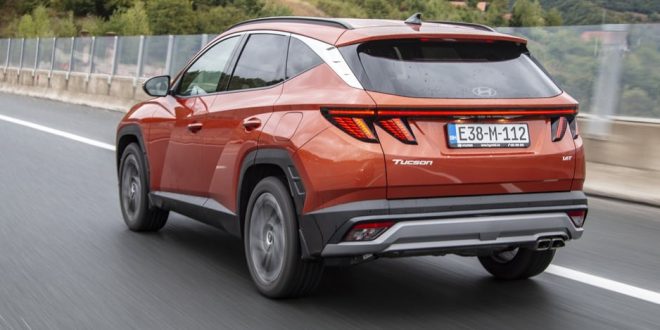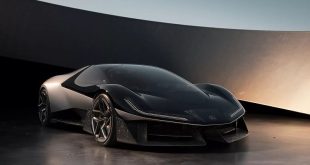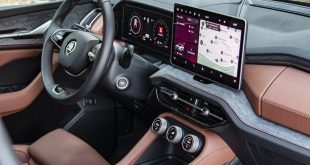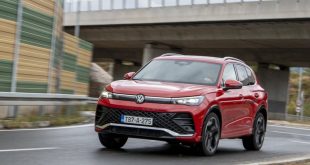Four years after its premiere, the globally popular Tucson, which due to its sales results can be seen as the “locomotive” of Hyundai’s long line-up, underwent a well-measured redesign that will, without any doubt, remain among the best-selling SUVs in the overcrowded C segment.The numbers never lie, and it was the numbers that confirmed that Hyundai has done an extremely successful job with the current generation of the Tucson model, because the harmonious South Korean SUV from the C segment (both in Europe and in the rest of the world) has been at the top of the sales charts for several years, which ended up surprising even the most optimistic.
While we are waiting for the new and unusually designed Santa Fe, which will find its customers in a much larger class, in Seoul they have prepared an optimally redesigned edition of their bestseller according to the established timetable, and with decent changes to the harmonious body and significant changes in the spacious cabin, we are convinced that the refreshed Tucson has enough assets to remain in the select company of today’s best-selling cars.
We concluded a long time ago that there is no redesign that can fix a bad original design, so it is not surprising that the dedicated designers of Hyundai did minimal cosmetic procedures on the body of the Tucson, because there was not much room to improve the appearance of the car, which is based on the attractive Vision concept model It looks great from every angle. We accept that the design experience is a subjective matter and there will always be opposing opinions, but we are among the majority who consider the new Tucson’s body design (which needs to be seen live before concluding), including details and overall proportions, to be among the most successful solutions in the world ready-made cars.
With the redesign came decent changes to the “face”, which include a different bumper, refined housings of the daytime LED lights in the (here) black radiator grille in the form of spread wings and refined housings of the main and extremely efficient LED lights with which already with the third equipment package (seen from below ) the adaptive lighting system is coming. The rear bumper has also been decently redesigned, which now houses new housings for the direction indicators and reversing lights. The downside of housings located low on the edges of the bumpers is that they remain quite exposed to damage in the event of an unwanted impact. Along with the redesign came different aluminum rims under the extended fenders, and the reason for a smile are the real endings of the exhaust system, because Hyundai decided a while ago that the fake ones look pointless.

Photo: EZ/Klix.ba
With the redesigned edition of the Tucson, major changes have arrived in the spacious and obviously better insulated interior in dark tones, in which materials have not been spared, because the South Korean car company has long made no secret that with the latest generations of its larger and more expensive models, it is aimed at customers who are more were turned towards the cream of the European car industry, because their budget is not among the primary items when choosing a car.
The previous solution, which included separate displays of the instrument panel and the multimedia system, has been replaced by a large, luxuriously stretched display whose left side in front of the person behind the multifunctional steering wheel is reserved for the adaptive instrument panel, and the right side for the multimedia system, which comes with an excellent audio system, navigation and compatibility with well-known applications for connecting to mobile phones. The lower part of the wide central console is occupied by a digital-analog and very ergonomic combination of buttons for controlling the air conditioning, and there are quite enough compartments for storing various things and connectors for powering various external devices.

Photo: EZ/Klix.ba
It should be emphasized that there is more than enough space in the Tucson’s cabin for all five passengers who can count on the support of exemplary comfortable seats on multi-hour journeys, and the volume of the trunk is substantial. Potential buyers who are ready to spend more should know that the Tucson can also be had with even richer equipment packages that come with everything that is offered today with cars in this category, but it seems that the test specimen with the third of the six equipment packages is also very well equipped. , if customers do not insist on leather-covered electrically adjustable seats, even more assistance systems, a panoramic roof…
The test specimen was powered by the familiar 1.6-liter four-cylinder turbopetrol engine with direct injection, which, along with the turbodiesel engine of the same configuration and working volume, forms the basic offer for the Tucson. Along with the redesign came an additional ten “horses”. Quiet and smooth, the engine proved to be powerful enough in all situations, regardless of the number of passengers in the cabin, and it also proved that with a defensive approach, activated start/stop system and the Eco work program, it can be surprisingly economical in city conditions.
With front-wheel drive only, the Tucson won’t falter easily on surfaces with any traction. The hybrid-gasoline powertrain options forced us to revise our long-held opinion that, for several reasons, modern turbodiesel engines are the optimal solution for SUVs, but in the case of the drivetrain, we will not revise our earlier opinion: With an emphasized distance between the floor and the ground, our SUV had to would be equipped with adaptive drive over both axles (4WD) which, along with the Tucson, can also be obtained in combination with the basic gasoline engine, when the manual 6-speed transmission gives way to a 7-speed automatic transmission with two clutches.
Driven in a dynamic rhythm on the asphalt, the redesigned Tucson (and without the N mark of the department in which they deal with the sports editions of Hyundai models) does well on winding roads, which is certainly helped by the light “nose” and the well-tuned / quiet suspension that is hidden behind the newly designed two-tone 19-inch aluminum rims with high-quality “shoes”. At the same time, there are almost no situations (bumps) in which the suspension will lose its smoothness and its primary role of providing large and small passengers with a comfortable journey on different surfaces.

Photo: EZ/Klix.ba
The latest sales data have already confirmed the excellent reception among our audience, because the fourth Tucson is the best-selling Hyundai model in Bosnia and Herzegovina, and the same is true in the surrounding area. Justified, because in the end we also thought of a very good investment/gain ratio, so we concluded that Hyundai will not have to prepare a replacement for its successful “locomotive” in the foreseeable future.
- Basic information about the test car: Hyundai Tucson 1.6 T-GDI 6 M/T 2WD Harmony
- Price of the basic gasoline model (Tucson 1.6 T-GDI 6 M/T 2WD Art): 54,900 KM
- Price of the test model with a promotional discount: 56,190 KM
- Engine: 4-cylinder, 4-stroke, gasoline, located forward transversely. Displacement 1,598 cc, direct fuel injection, turbocharger, four valves per cylinder. Maximum power 117.6 kW – 160 HP at 5,500 rpm. Maximum torque 265 Nm from 1,500 to 4,500 rpm.
- Power transmission: Front axle drive (2WD). Manual 6-speed gearbox. Rims 7.5J x 19, tires size 235/50 R19 (Continental PremiumContact 6).
- Chassis: Front suspension – McPherson, independent, coil springs, gas shock absorbers. Stabilizers. Rear suspension – multilink axle, coil springs, hydraulic-gas shock absorbers. Electric power steering.
- Performance and fuel consumption: Acceleration from 0 to 100 km/h – 9.9 s. Top speed – 192 km/h. Fuel consumption on test: from 5.6 to 8.9 l/100 km. Factory-declared average consumption according to WLTP standards: 6.7 l/100 km. Average CO² emission according to WLTP standards: 152 g/km. Euro 6e.
- Dimensions: Length – 4,510 mm. Width – 1,865 mm. Height – 1,650 mm. Wheelbase – 2,680 mm. Trunk volume: from 620 to 1,799 liters with the rear seats folded down. Weight of the empty car: 1,445 kg. The maximum permissible weight is 2,095 kg. Fuel tank volume – 54 lit.
- Standard equipment of the test car: Hyundai Tucson 1.6 T-GDI 6 M/T 2WD Harmony
- Additional equipment: Metallic color (Jupiter Orange) – 1,200 KM.
- Warranty: 5 years with no mileage limit.
 Blicnet Informacije na klik od tebe.
Blicnet Informacije na klik od tebe.




